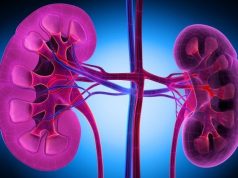Evidence currently inadequate for assessing the balance of benefits and harms of screening for atrial fibrillation in asymptomatic adults
THURSDAY, Jan. 27, 2022 (HealthDay News) — The U.S. Preventive Services Task Force (USPSTF) concludes that current evidence remains insufficient for weighing the benefits and harms of screening for atrial fibrillation (AF). These findings form the basis of a final recommendation statement published in the Jan. 25 issue of the Journal of the American Medical Association.
Leila C. Kahwati, M.D., M.P.H., from RTI International-University of North Carolina at Chapel Hill Evidence-based Practice Center, and colleagues conducted a systematic review of 26 studies (including 113,784 persons) to examine the evidence on screening for AF in adults without prior stroke. The researchers found that the likelihood of a composite end point (ischemic stroke, hemorrhagic stroke, systemic embolism, all-cause mortality, and hospitalization for bleeding) was lower in the screened group over 6.9 years in one trial, but the study had numerous limitations. Significantly more AF was detected in four randomized clinical trials with intermittent and continuous echocardiogram screening versus no screening. Treatment with warfarin was associated with fewer ischemic strokes and lower all-cause mortality compared with placebo in populations with clinical, mostly persistent AF. Direct oral anticoagulants were also associated with a lower incidence of stroke.
Based on these findings, the USPSTF concludes that the current evidence is inadequate for assessing the balance of benefits and harms of screening for AF (I statement).
“Unfortunately, there still is not enough evidence to know if screening for a-fib helps to prevent strokes in older adults,” USPSTF task force member Gbenga Ogedegbe, M.D., M.P.H., said in a statement. “Since a-fib is a risk factor for stroke and can go undetected, clinicians should use their best judgment to decide whether or not to screen people without signs or symptoms of a-fib.”
Final Recommendation Statement
Copyright © 2021 HealthDay. All rights reserved.








